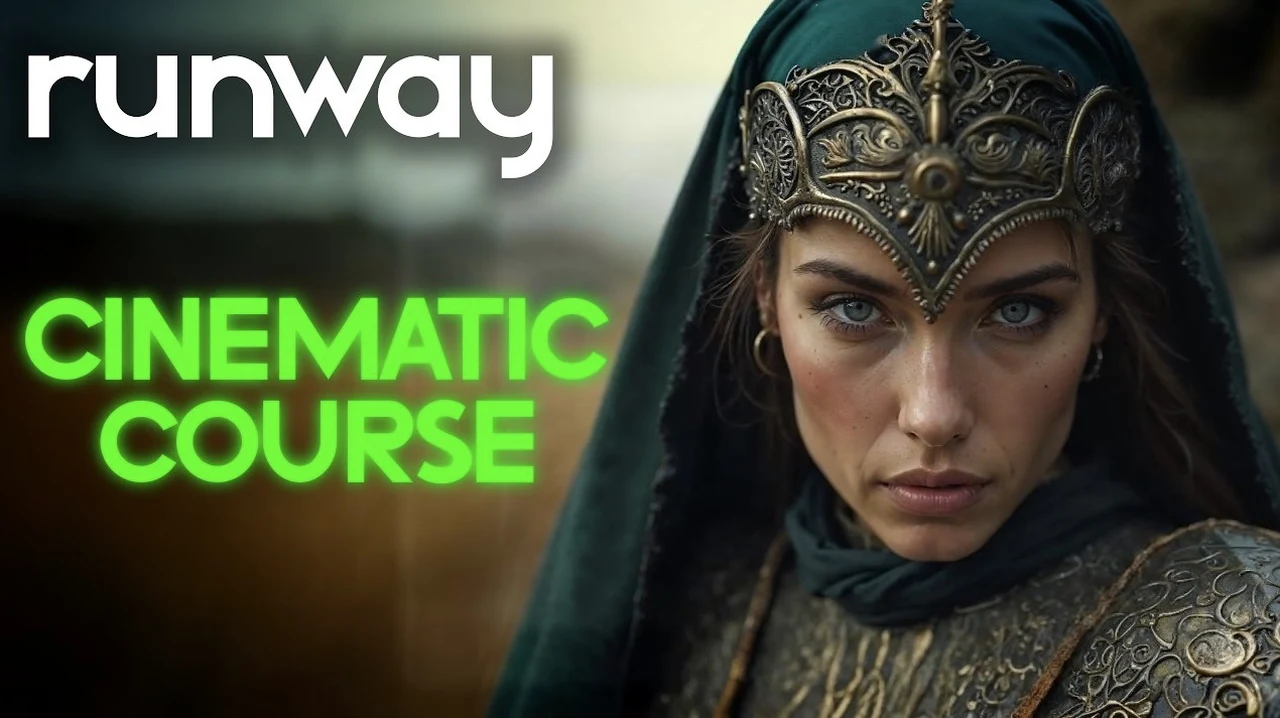There has never been a better time to start creating movies and animations using the powerful AI filmmaking tools now available. Artificial intelligence allows anyone with a story to tell to bring it to life on the big screen, regardless of budget or technical expertise. This transformation is made possible by innovative AI filmmaking tools like Runway Gen 3. The barriers that once limited creative expression are falling, opening a new era where diverse voices can thrive. Whether you’re an aspiring filmmaker or a seasoned director, the possibilities are endless as AI reshapes storytelling, making filmmaking more accessible and inclusive than ever.
But how does AI achieve this transformation? By automating complex tasks and offering intuitive interfaces, AI tools are not only simplifying the filmmaking process but also improving it with advanced camera techniques and dynamic storytelling methods. From static shots that capture emotional depth to crane shots that reveal the grandeur of a scene, AI is equipping filmmakers with a rich palette of options to craft compelling narratives.
The Widespread access of AI Filmmaking
TL;DR Key Takeaways :
- AI tools like Runway Gen 3 are democratizing filmmaking by making it accessible to a wider audience, breaking down traditional barriers and encouraging diverse storytelling.
- AI-generated films utilize various camera techniques such as static, dolly, pan, tilt, handheld, tracking, leading, and crane shots to enhance emotional depth and narrative flow.
- Technical tips for AI filmmaking include selecting the right initial shot, using precise keywords in AI prompts, controlling editing speed, and employing keyframes for smooth transitions.
- AI acts as a catalyst for expanding creative boundaries, allowing filmmakers to experiment with new techniques and explore uncharted storytelling territories.
- The future of storytelling with AI involves actively shaping its evolution to ensure its benefits are accessible and contribute to a more inclusive cinematic landscape.
AI tools like Runway Gen 3 are dismantling long-standing barriers in the film industry, allowing creators from all backgrounds to share their unique stories. By automating complex technical tasks and offering intuitive, user-friendly interfaces, these tools are making filmmaking accessible to a wider audience than ever before. This widespread access of the creative process is fostering a more inclusive industry, where diverse perspectives can flourish and reach global audiences.
Key benefits of AI in democratizing filmmaking:
- Reduced production costs
- Simplified technical processes
- Increased accessibility for novice filmmakers
- Faster turnaround times for projects
- Enhanced creative experimentation
Advanced Camera Techniques in AI-Generated Films
Mastering camera techniques is crucial in AI filmmaking, as these digital tools can replicate a wide range of cinematographic styles. Static shots, for instance, can convey profound emotional depth, allowing viewers to focus intently on the nuances within a scene. Dolly shots enhance emotional impact by smoothly moving the camera, deepening the viewer’s connection to the narrative and characters.
Pan shots are instrumental in capturing wide scenes, facilitating narrative flow and providing context. Tilt shots add dynamism by shifting the camera angle vertically, often used to reveal information or create dramatic effect. Handheld shots immerse the audience in the action, creating a sense of immediacy and realism. Tracking and leading shots maintain anticipation in action sequences, guiding the viewer’s eye through complex scenes. Crane shots provide a sweeping, bird’s-eye view, revealing the scope and intricate details of a scene, thereby enriching the storytelling process.
AI Filmmaking Guide (Your Ultimate Guide to Cinematic Masterpieces)
Here are more detailed guides and articles that you may find helpful on AI tools.
Technical Tips for Mastering AI Filmmaking
To harness the full potential of AI in filmmaking, consider these essential technical tips:
1. Initial shot selection: Choosing the right opening shot is crucial as it sets the tone and direction for the entire film. AI tools can generate multiple options, allowing filmmakers to experiment with different moods and styles.
2. Precise keyword prompts: Using specific and descriptive keywords in AI prompts helps achieve desired visual effects, effectively guiding the AI in scene generation. The more precise the language, the more accurate the output.
3. Speed control in editing: Manipulating the speed of AI-generated footage during editing is crucial for maintaining the film’s pace and making sure dynamic results. This can involve slowing down or speeding up scenes to create tension or excitement.
4. Keyframe utilization: Keyframes are vital for creating creative scene transitions, allowing for smooth and visually appealing shifts between different segments of the film. AI tools can interpolate between keyframes, creating fluid motion and effects.
5. Color grading and post-processing: AI-powered color grading tools can enhance the visual aesthetics of your film, creating consistent moods and atmospheres across scenes.
The Future of Storytelling in the AI Era
AI is more than just a tool; it’s a fantastic option for expanding the creative boundaries in filmmaking. It enables creators to experiment with new techniques and explore uncharted territories in visual storytelling. As AI continues to evolve, filmmakers must actively engage with these technologies to shape the future of storytelling, making sure that the benefits of AI are widely distributed and accessible.
The integration of AI in filmmaking presents both opportunities and challenges. While it offers unprecedented creative possibilities, it also raises questions about the nature of authorship and the role of human creativity in an increasingly automated process. Filmmakers will need to navigate this new landscape, finding ways to use AI’s capabilities while maintaining their unique artistic vision.
AI filmmaking is transforming the industry by providing innovative tools that enhance storytelling capabilities. By embracing these technologies, filmmakers can overcome traditional barriers, provide widespread access to the creative process, and contribute to a more inclusive and diverse cinematic landscape. As AI continues to advance, it promises to unlock new realms of creative expression, potentially redefining the very nature of cinema itself.
Media Credit: CyberJungle
Filed Under: AI, Guides, Top News
Latest TechMehow Deals
Disclosure: Some of our articles include affiliate links. If you buy something through one of these links, TechMehow may earn an affiliate commission. Learn about our Disclosure Policy.
